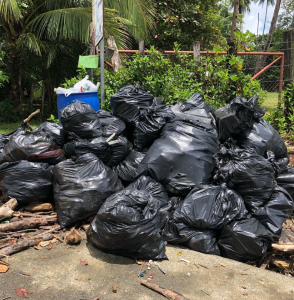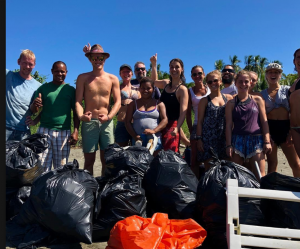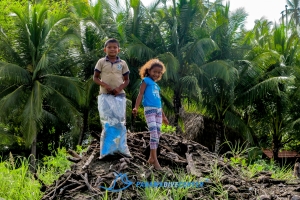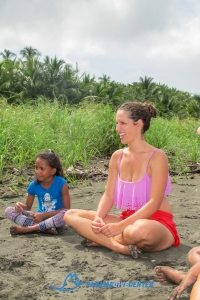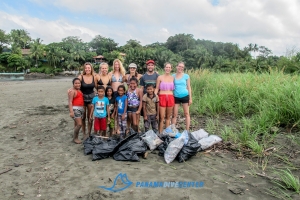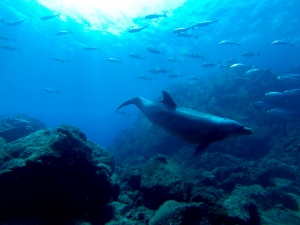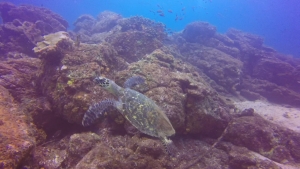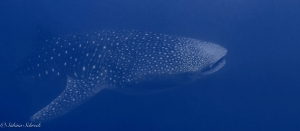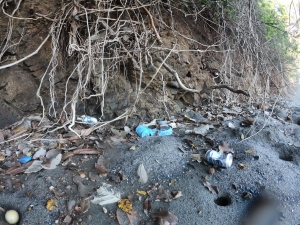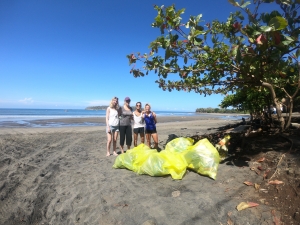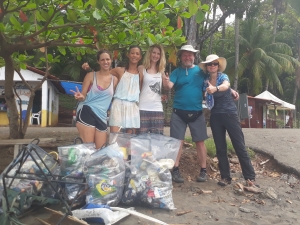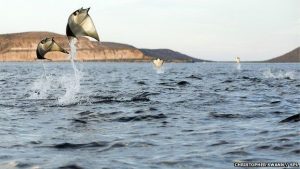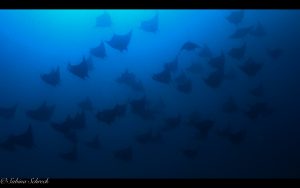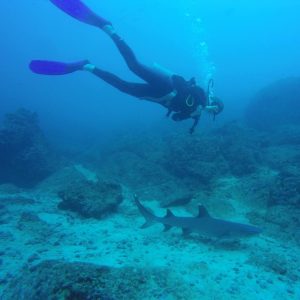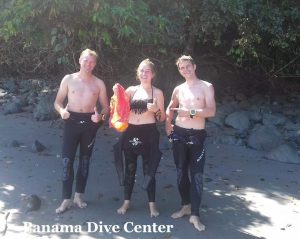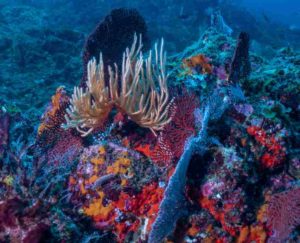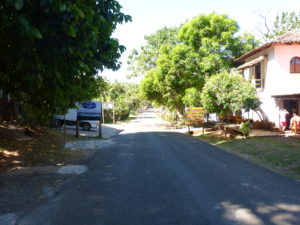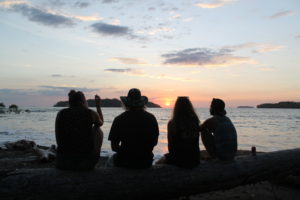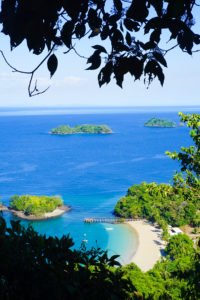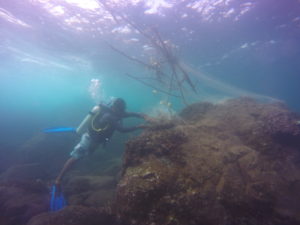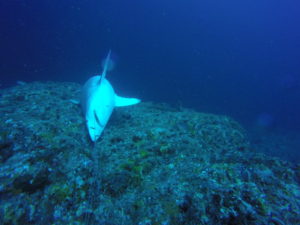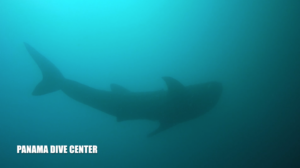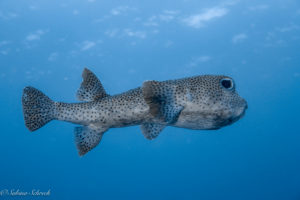
If you´ve had the chance to dive in the Coiba National Park in Panama, you surely had the opportunity to admire the variety of pufferfish present on the site. Indeed, these intriguing little fishes traverse the reserve in great numbers and surprise us with their variety in colors. However, we know very little about this species, its peculiarities and its habits. This article will try to answer some of the questions and attempt to give a little more insight about these fascinating creatures.
What is their real name?
Beyond balloon fish, globe fish, puffer fish, their real name is Tetraodontidae (smooth puffers) or Diodontidae (spiny puffers), much less simple to pronounce.
What do they look like?
There are 121 species of puffer fish, so it is possible to meet individuals of many types. What they have in common is the shape of their bodies, elongated and globular. All puffers have five fins, two pectoral, one dorsal, one abdominal and one anal. Their skin is hard, smooth and without scales. Some of them have bright colors that indicate their danger and toxicity, while others have more discreet colors that allow them to blend into their surroundings. In addition, many of them have the ability to change color to adapt to changes in the environment. These changes can be discrete, variations in hues, contrasts, or very surprising, total color changes from yellow to black with white spots. In terms of size, there is also a great variety: it is possible to meet species of balloon fish of only 2.5 cm in length while others can reach up to 100 cm in length.
What are they feeding on?
The diet of puf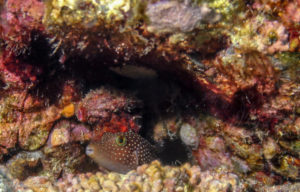 fer fish is mainly composed of invertebrates and algae. They have four teeth, two centered on the upper jaw and two on the lower jaw. This dentition has the appearance of a beak and allows the largest specimens to break the crustaceans which are also part of their diet.
fer fish is mainly composed of invertebrates and algae. They have four teeth, two centered on the upper jaw and two on the lower jaw. This dentition has the appearance of a beak and allows the largest specimens to break the crustaceans which are also part of their diet.
Why do some of them puff?
Puffer fish are very slow and it is very difficult for them to escape from their predators. Thus, inflating allows them to scare their assailants. They can indeed reach up to three times their original size. To achieve such a transformation the globe fish uses the impressive elasticity of its stomach and quickly ingests a large amount of water or even air if necessary. It then looks like a kind of ball, often covered in thorns, which dissuades most predators from coming closer.
What are their other defenses?
Despite their slowness, puffer fish have very good eyesight and they are able to orient their eyes independently. They are also able to maneuver easily in all directions in the water. These two assets allow them to spot any threats in time to hide or swell up to a balloon.
In addition to inflating some puffers are covered in spikes which stick put upon inflation and make them inedible. In addition, almost all puffer fish produce tetrodotoxin, a very toxic substance present in their internal organs and skin. It would appear that they create this toxin by synthesizing the bacteria present in their food. Thus, if a predator catches them before it swells, it may regret it. Indeed, this substance is1200 times more dangerous than cyanide and lethal for almost all the predators. The dose of this toxin present in a single balloon fish can kill up to 30 adult humans, and there is no known cure. So under their inoffensive face, they hide a real murderer potential, which even classify them as the second most toxic animal in the world after the poisonous golden frog.
How do they reproduce?
In most cases in salt water, the male brings the female to the surface where it releases between three and seven eggs, which it subsequently fertilizes. The eggs remain on the surface and hatch after about four to seven days. However, a species of globe fish stands out because of their incredible courtship: the Japanese Pufferfish. These create nests which are real architectural masterpieces to attract the females (https://www.youtube.com/watch?v=FV1C_HvP8P0)
In fresh water, the task is more complicated for males, which have to differentiate themselves from others to be chosen by the female. He draws her into a protected place in order to release her eggs, which he will fertilize. In captivity, it has been observed that the male protects the eggs until hatching.
A nice meal?
Their toxicity makes puffer fish very complicated to eat. Indeed, only a very precautionary preparation makes consumption possible. Despite this danger, ´takifugu´ puffer has become an exceptional dish in Japan. Although it is only be prepared by graduated chefs, every year some people are hospitalized and die intoxicated by fugu. Its consumption is even forbidden to the emperor. This danger does not frighten the Japanese for whom it is a luxurious delicacy. A dish made of fugu can costs between $20 and $50, the whole fish is sold between $100 and $200. In other parts of Japan some puffer fish farms have made them non-toxic by monitoring their diet, making them more simple to consume.
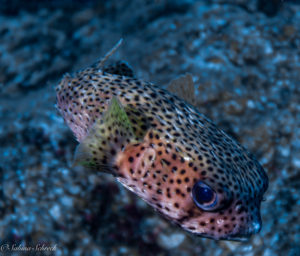
A population in danger?
Although in Coiba National Park you can come across at least 7 different types of puffer fish. This is not the case everywhere in the world. Indeed, some species are beginning to be threatened by pollution, overfishing and the destruction of reefs. This is particularly the case with the Japanese puffer, whose population has declined by 99% in the last 40 years, as well as the Canthigaster cyanetron, the red lined puffer fish and the dwarf puffer recently classified as vulnerable species in danger of extinction.
-by Anaïs Yvinou
Sources:
http://www.nationalgeographic.com/animals/fish/group/puffer fish/
https://en.wikipedia.org/wiki/Tetraodontidae
http://vieoceane.free.fr/poissons/familles/Tetraodontidae/fiche1.html
http://ipfactly.com/puffer fish/
https://www.aquaportail.com/taxonomie-famille-177-tetraodontidae.html
https://a-z-animals.com › A-Z Animals › Animals › Puffer Fish
https://diverswhowanttolearnmore.wordpress.com/2014/11/16/tetraodontidae-puffer fish-vs-porcupinefish/
eol.org/pages/5056/overview
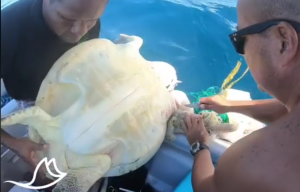 Here in Santa Catalina, we see that as a reality. Currents bring plastics from all over to our shores. Did you know that 79% of plastic waste we accumulate sticks around in landfills, the ocean, and other terrestrial environments for hundreds of years if not more? That may be hard for us to imagine, but maybe not so much for our marine wildlife.
Here in Santa Catalina, we see that as a reality. Currents bring plastics from all over to our shores. Did you know that 79% of plastic waste we accumulate sticks around in landfills, the ocean, and other terrestrial environments for hundreds of years if not more? That may be hard for us to imagine, but maybe not so much for our marine wildlife.